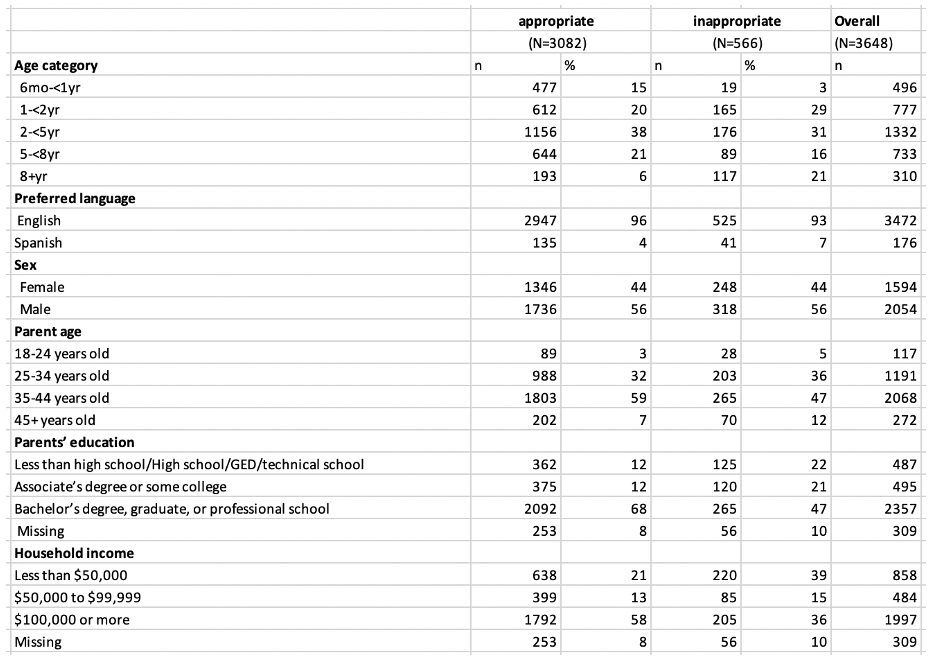Injury Prevention
Session: Injury Prevention 2
382 - Child Passenger Safety and Socio-Demographics: Patterns of Appropriate Restraint Use in Chicago with Relation to the Child Opportunity Index
Saturday, May 4, 2024
3:30 PM - 6:00 PM ET
Poster Number: 382
Publication Number: 382.1649
Publication Number: 382.1649

Michelle Macy, MD, MS (she/her/hers)
Associate Professor
Ann & Robert H. Lurie Children's Hospital of Chicago
Chicago, Illinois, United States
Presenting Author(s)
Background: Injury inequities persist with differences in the use of age and size-appropriate car seats as a contributing factor. Sociodemographic characteristics have been associated with car seat and booster seat use. Measures that only look at one facet of the social context do not capture the myriad factors at play. The Child Opportunity Index 2.0 (COI) provides a composite measure of neighborhood characteristics for children to become healthy, productive adults. Child passenger safety behaviors have not previously been examined through the lens of COI.
Objective: To calculate rates of appropriate child restraint system (CRS) use across categorical ZIP code-level COI.
Design/Methods: Parents of children 6 mos to 10 yrs seen for pediatric emergency or urgent care in three metro Chicago locations were invited to report family demographic characteristics and CRS use for their child on a typical trip in a passenger vehicle. Parent-reported data were linked to EHR-based weight, height, and demographic data for the child. CRS use was determined to be appropriate or not based on American Academy of Pediatrics (AAP) guidelines, weight limits of typical CRSs on the US market, and the child’s age and weight from the EHR. Descriptive and chi-square statistics were calculated in R. Maps were created in ArcGIS Online.
Results: 3,648 parent responses were linked back to the child’s EHR data and included in our analysis. The mean child age was 43.7 months (median 35.4, interquartile range (IQR) 17-35). Most children (84%) were reported to be using a CRS considered appropriate for their age and weight. CRS appropriateness decreased with increasing child age (Table 1). CRS appropriateness was lower for those who were Hispanic, Spanish speaking, Black or African American or Other race, with parents 18-24 or over 55, and with parent education below a bachelor's degree and household income less than $50K; and equal for boys and girls (84% vs. 85%). Appropriate CRS use ranged from a low of 70% in very low COI ZIP codes to a high of 88% in high COI ZIP codes, with 80% for low and moderate and 83% in very high COI ZIP codes (X2 = 81.03, p< 0.05) (Figure 1).
Conclusion(s): Patterns of child passenger safety in Chicago mirror prior literature on child age and single demographic measures. The lowest COI communities have the lowest rates of appropriate CRS use. COI and geographic patterns may be helpful in directing child passenger safety resources to communities with less adherence to AAP guidelines for child passenger safety and at greater risk for injury in a crash.

.png)
